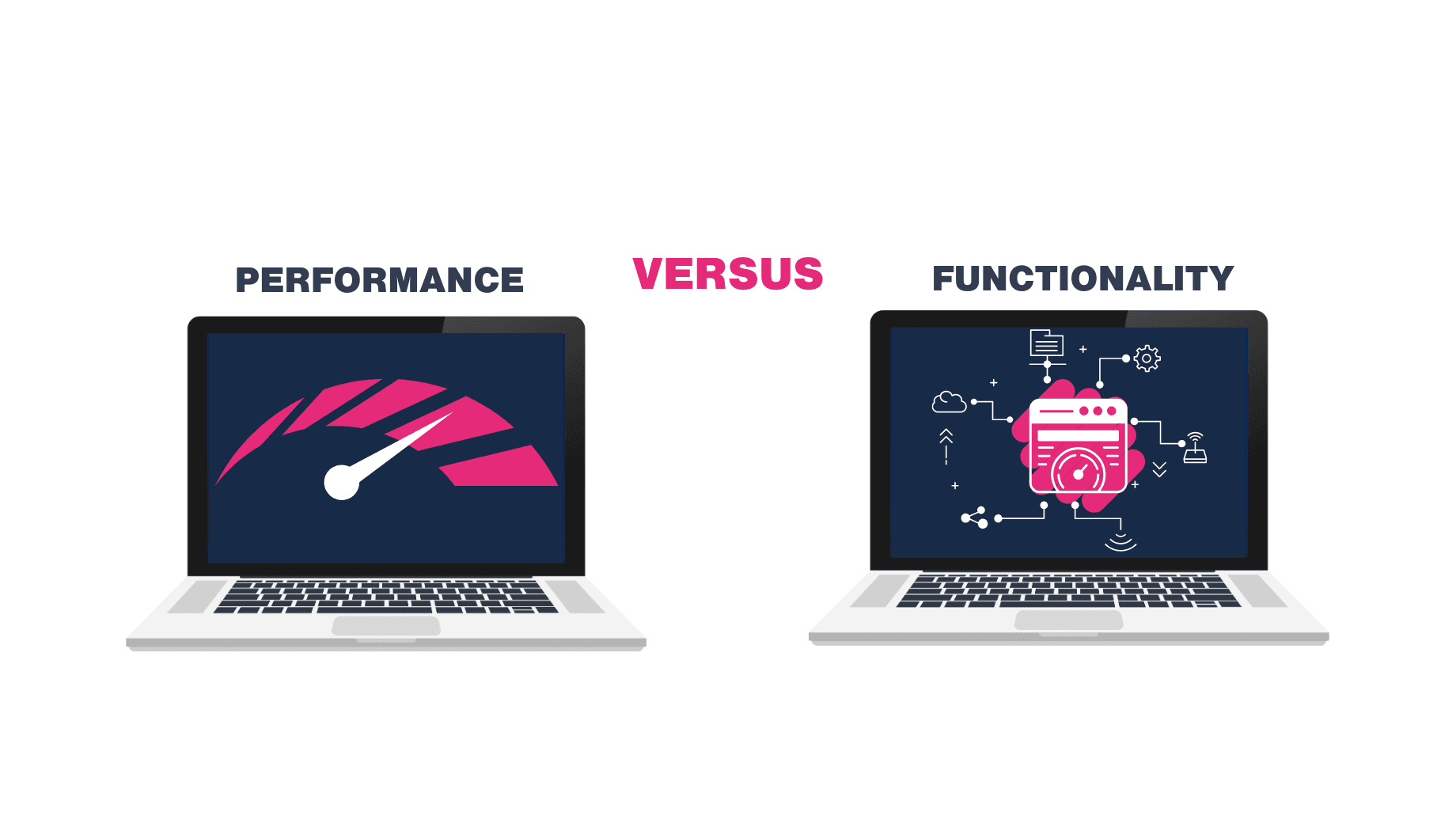You don't have to choose between a feature-rich WordPress site and a fast one. With the right stack, build, and a few smart habits, you can (and should) have both.
Why performance matters
Speed isn’t a “nice to have” — it affects bounce rate, user satisfaction, and conversions. Google’s Core Web Vitals give clear targets: LCP ≤ 2.5s (loading), INP < 200ms (interactivity), CLS ≤ 0.1 (visual stability).
Real-world data shows the risk of slowness: as mobile load time increases from one to three seconds, the probability of a bounce rises sharply — and it gets much worse as you approach ten seconds. Faster sites consistently convert more.
Functionality without the bloat
Features make a website useful — booking flows, calculators, gated content, integrations — but every extra plugin or script adds weight and complexity. The goal is minimum viable functionality, delivered in the lightest way possible.
- Prefer server-side logic over heavy client-side JS where practical
- Dequeue unused assets on templates that don’t need them
- Replace overlapping plugins with one well-maintained option
- Plan a small performance budget and hold new features to it
| Metric | Target |
|---|---|
| TTFB | < 200ms (origin) / < 100ms (edge cached) |
| Total JS | < 150KB gzipped |
| Total CSS | < 150KB gzipped |
| Images (above the fold) | Optimised WebP/AVIF, width/height set |
| LCP | ≤ 2.5s (field) |
A practical WordPress performance stack
1) Caching & front-end optimisation
- LiteSpeed Cache (if your host runs LiteSpeed/OpenLiteSpeed): server-level page caching + optimisation
wordpress.org/plugins/litespeed-cache/ - Autoptimize (Apache/Nginx stacks): minify/aggregate CSS/JS/HTML, optimise fonts, lazy-load
wordpress.org/plugins/autoptimize/ - Performance Lab (WordPress Performance Team): early performance features destined for core
wordpress.org/plugins/performance-lab/ - Perfmatters (paid): per-page Script Manager, preconnect/preload tools, database tweaks
perfmatters.io/features/
Tip: run one caching/optimisation plugin at a time to avoid conflicts.
2) Persistent object caching
Reduces database trips on dynamic pages and shops.
- Redis Object Cache (free) + Redis service on your host
wordpress.org/plugins/redis-cache/
3) Images & fonts
- Serve WebP/AVIF where supported; compress appropriately
- Lazy-load below-the-fold images; set
width,heightoraspect-ratioto prevent CLS - Host fonts locally, prefer WOFF2, and add
font-display: swap
4) Diagnostics
- Query Monitor to spot slow queries, hooks and heavy scripts
wordpress.org/plugins/query-monitor/
Hosting location & server performance
TTFB (Time to First Byte) is the foundation for everything that follows. High TTFB slows FCP and LCP. Keep PHP current (8.x with OPcache), enable Brotli (or Gzip fallback), and put your origin in or near your audience (e.g., UK/EU data centre for a UK market).
- Use a CDN to cache globally and lower latency for distant users
- Enable HTTP/2 or HTTP/3 and TLS resumption/keep-alive
- Tune the stack: PHP workers, database indexes, and object cache
- Watch TTFB by region; fix slow back-end routes and queries
When custom plugin development wins
Off-the-shelf plugins are brilliant for speed to market, but “do-everything” plugins often load code you’ll never use. A small, purpose-built plugin can deliver the exact functionality you want with a tiny JS/CSS footprint — and integrate cleanly with caching and your theme.
- Only the features you need (no bulky admin UI or marketing add-ons)
- Server-first logic to minimise main-thread blocking on mobile
- Strict asset control (load scripts/styles only where needed)
- Easier to hold to a performance budget and keep Core Web Vitals green
Test, verify & monitor
Use both lab and field tools so you see synthetic results and real user experience:
Workflow: test key templates from a consistent location/device, run 3–5 times, use medians, then validate with field data (CrUX/Core Web Vitals). Repeat after changes.
A simple improvement roadmap
- Baseline: PSI + WebPageTest on top templates; record LCP/INP/CLS, TTFB
- Quick wins: server/page caching, Brotli, image sizing, remove unused plugins
- Assets: defer non-critical JS, deliver critical CSS, preconnect/preload key requests
- Stability: lock image/iframe dimensions; fix layout shifts
- Scale: add Redis object cache; fix slow queries with Query Monitor
- Refactor: replace heavy plugins with a lean custom plugin where it makes sense
- Host & CDN: place origin near users, add CDN with HTTP/2 or HTTP/3
- Monitor: schedule GTmetrix/WebPageTest runs; watch Search Console
FAQ
Is one plugin enough for performance?
Often, yes. Use one caching/optimisation plugin (LiteSpeed Cache or Autoptimize + page cache), plus Redis for dynamic sites. Avoid overlapping features.
How much does hosting location really matter?
For UK-focused sites, a UK/EU data centre trims latency and TTFB. A CDN then accelerates delivery everywhere else.
Will custom development break updates?
Not if it’s done properly. We follow WordPress standards, namespacing, and enqueue assets conditionally, with version control and staging tests.


